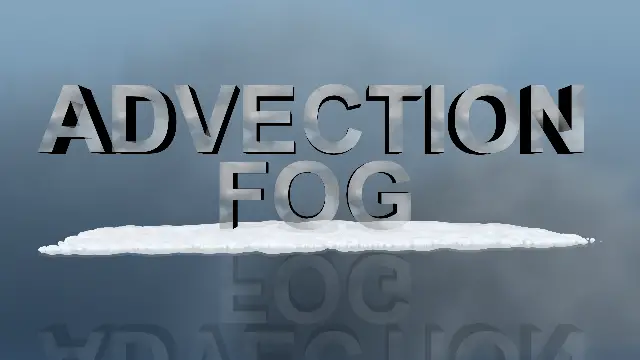Demystifying the Science of Recent Foggy Days. Discover the science behind the recent foggy days in Fort Wayne, Indiana, and learn about different types of fog and how it forms. Stay informed and stay safe with Live Doppler 15 Fury Storm Team alerts.
Understanding Advection Fog: What Causes It and How to Clear It
If you’ve been in northeast Indiana and northwestern Ohio over the last two days, you’ve likely experienced the effects of a Dense Fog Advisory. But what exactly causes these foggy conditions, and how can we restore full visibility?
The Different Types of Fog
Believe it or not, there are several different types of fog, each with its own unique characteristics. While we may not see all of them in this region, some are specific to features such as bodies of water or mountain ranges. For a comprehensive list of fog types, you can visit The National Weather Service’s website.
In this area, the most common types of fog we experience are Radiation Fog and Advection Fog. Over the past couple of days, we’ve been dealing with Advection Fog, so let’s delve into what this specific type is and how it forms.
Understanding Advection Fog
First, let’s clarify what advection means. According to the National Weather Service, advection is the “Transport of an atmospheric property by the wind.” You may have heard of terms like “warm air advection,” which refers to the horizontal transfer of warmer air into an area experiencing cooler air.
Advection fog forms when warm, moist air moves over a much colder surface. In our recent case, the region had an abundance of snow and ice on the ground before a warmer air mass pushed in. As the warmer air entered the area, it mixed with the cooler temperatures at the surface, cooling the air to the point of saturation.
The Process of Advection Fog Formation
Saturation occurs when the dew point and temperature are equal, causing evaporation to slow and condensation to begin. This results in water vapor condensing into tiny liquid droplets. Additionally, the warmer air began melting the snowfall, adding even more vapor into the air.
Methods to Dissipate Fog, Science of Recent Foggy Day
There are several atmospheric occurrences that can help dissipate fog:
1. Increase in Surface Temperature: Creating a numerical difference between the temperature and dew point can move away from the point of saturation.
2. Increase in Surface Winds: Strong winds help push fog out of the area.
3. Introduction of Drier Air: Drier air can reduce moisture in the region.
In addition to these methods, it’s crucial to stay informed about Dense Fog Advisories, which are issued when visibilities are reduced to a quarter-mile or less for a prolonged period. The Live Doppler 15 Fury Storm Team provides real-time weather alerts, ensuring that you can be prepared for such conditions. When driving in dense fog, it’s essential to take precautions and use low-beam headlights to ensure visibility for oncoming traffic.
Understanding the causes and processes of fog formation can help us navigate through these weather challenges with caution and preparedness.

